Description
Chapter 01
An Introduction to the Fundamentals of Dynamic Business Law and Business Ethics
True / False Questions
1. Business law consists of the suggested rules of conduct that govern commercial relationships.
True False
2. Many market transactions occur without legal guidelines.
True False
3. Because of the law, we rely on the goodwill and dependability of one another.
True False
4. Crimes are prosecuted by the government, not individuals.
True False
5. Public law involves disputes between private individuals or groups and their government.
True False
6. Another name for case law is common law.
True False
7. Case law interpretations are law unless they are revoked later by new statutory law.
True False
8. The term “stare decisis” means “reversing the decision.”
True False
9. A decision of a state supreme court is binding on a lower state court located in the state.
True False
10. A decision from a state supreme court in one state is binding on a trial court judge in another state if the other state has no applicable law on the issue involved.
True False
11. Constitutions and statutes are complete in the sense of covering the detailed rules that affect government and business relations.
True False
12. Presidents claim the power to issue executive orders on the basis of their Article II, Section 1, constitutional power to “take care that the laws be faithfully executed.”
True False
13. Ethical conversation is primarily about finding the one and only right thing to do.
True False
14. The social responsibility of business if formed by expectations employees have of employers.
True False
Multiple Choice Questions
15. Penny is investigating what she needs to do to legally open a dog grooming business in her city. Which of the following would govern the business?
A. State statutes
B. City ordinances
C. Model laws
D. State statutes, city ordinances, and model laws
E. State statutes and city ordinances but not model laws
16. Which of the following is not a purpose of the law as set forth in the text?
A. Encouraging taxation
B. Serving as an alternative to fighting
C. Encouraging social justice
D. Guaranteeing personal freedoms
E. Providing order such that one can depend on a promise or an expectation of obligations
17. Which of the following most accurately sets forth ways into which law may be divided and classified?
A. National versus international.
B. Federal versus state.
C. Public versus private.
D. National versus international, and federal versus state, but not public versus private.
E. National versus international, federal versus state, and public versus private.
18. Which of the following involves disputes between private individuals or groups?
A. Public law
B. Private law
C. Governmental law
D. Public law and private law, but not governmental law
E. Public law, private law, and governmental law
19. Which of the following involves disputes between private individuals or groups and their government?
A. Public law
B. Private law
C. Governmental law
D. Public law and private law, but not governmental law
E. Public law, private law, and governmental law
20. Which of the following involves remedies available to an individual when his or her rights are violated?
A. Civil law
B. Resolution law
C. Procedural law
D. Civil law and procedural law, but not criminal law
E. Civil law, criminal law, and procedural law
21. Which of the following applies to situations in which someone commits an act against the public as a unit?
A. Civil law
B. Criminal law
C. Procedural law
D. Civil law and procedural law, but not criminal law
E. Civil law, criminal law, and procedural law
22. Laws are enforced by which of the following?
A. State legislatures
B. Federal Congress
C. Community consensus
D. Courts
E. All of these
23. A majority of citizens in a democracy can agree to permit certain authorities to make and enforce rules describing what behavior is permitted and encouraged in their community. These rules are what we refer to as the ______.
A. Electoral College
B. Community standard
C. Democratic validation
D. Staredecisis
E. Law
24. Assume a businessperson who owns a computer equipment store is delinquent in paying rent to the landlord. The resulting dispute entails ______ law.
A. Public
B. Preferential
C. Consensual
D. Private
E. Black letter
25. If a computer store dumps waste behind its building in violation of local, state, or federal environmental regulations, the resulting dispute focuses on ______ law.
A. Public
B. Preferential
C. Consensual
D. Private
E. Black letter
26. Which type of law involves the rights and responsibilities involved in relationships between persons, and between persons and their government?
A. Criminal
B. Procedural
C. Civil
D. Natural
E. Positive
27. Crimes committed under criminal laws are prosecuted by which of the following?
A. Only injured individuals
B. Any interested person whether injured or not
C. State government only
D. The federal government only
E. The state or federal government
28. Assume a restaurant chain is forced to pay damages to a person who suffered food poisoning after eating at the restaurant. What type of law is involved?
A. Public law only
B. Private law only
C. Civil law only
D. Public, private, and civil law
E. Private law and civil law
29. Assume the Securities and Exchange Commission prosecutes someone for insider trading. That prosecution is an example of ______ law.
A. Criminal
B. Procedural
C. Civil
D. Natural
E. Positive
30. The ______ is the supreme law of the land.
A. U.S. Constitution
B. Declaration of Independence
C. U.S. Code
D. Model Law
E. Uniform Code
31. The United States Constitution and the ________ establish the fundamental principles and rules by which the United States and the several states are governed.
A. Administrative rules
B. Procedural rules
C. Constitution of each state
D. Bylaws of each state
E. Both the procedural rules and the bylaws of each state
32. The rules and regulations put forth by legislatures are referred to as ______ law.
A. Administrative
B. Statutory
C. Uniform
D. Proper
E. Secondary
33. Legislative acts passed by state legislatures can be found in ______.
A. The U.S. Code
B. State codes
C. The Uniform Register
D. The State Reporter
E. The State Reference Manual
34. Legislative acts passed by the U.S. Congress can be found in ______.
A. The U.S. Code
B. State codes
C. The Uniform Register
D. The State Reporter
E. The State Reference Manual
35. Which of the following is a term used to refer to laws that are contained in one convenient location?
A. Area laws
B. Codes
C. Classifications
D. Filings
E. Reports
36. Which of the following references rules of cities and counties that govern matters not covered by federal or state law?
A. Area laws
B. Ordinances
C. Classifications
D. Filings
E. Reports
37. The group that urges states to enact model laws to provide greater uniformity of law is called the ______.
A. Model Law on Uniform State Laws Organization
B. Federal Uniform Law Commission
C. National Conference of Commissioners on Uniform State Laws
D. Model and Uniform Law Consortium
E. Uniform Statutory Enforcement Commission
38. When the organization in charge of proposing uniform laws proposes a statute, which of the following is true?
A. All states must adopt the uniform statute within one year.
B. All states must adopt the uniform statute within six months.
C. The uniform statute automatically goes into effect without any action by state legislatures.
D. A state legislature is not required to adopt the uniform statute; but if the state legislature decides to go forward with adoption, all portions of the statute must be adopted.
E. A state legislature can ignore the proposed uniform law, adopt it in full, or adopt it in part.
39. Case law can be revoked by ______.
A. New statutes
B. Precedent
C. Staredecisis
D. Standard law
E. None of these because case law cannot be revoked.
40. The term ______ involves the use of past decisions to guide future decisions.
A. Commonality
B. Precedent
C. Restatement
D. Uniformity
E. Modeling
41. The ______ is a significant body of law to business activities including sales, banking, and warranty.
A. Federal Business Code
B. Model Business Code
C. Uniform Transactional Model
D. Uniform Commercial Code
E. Marketing Transaction Code
42. When courts rely on precedent, they are obeying ______.
A. Common analysis
B. Resjudicata
C. Staredecisis
D. Inrem process
E. Federal law

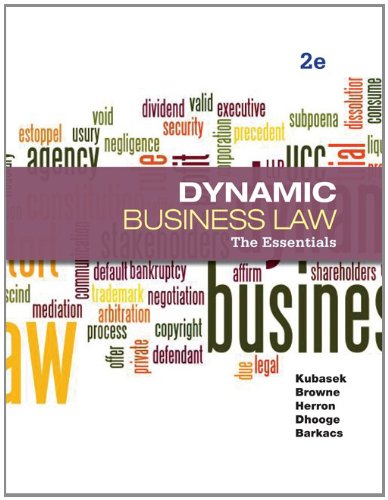
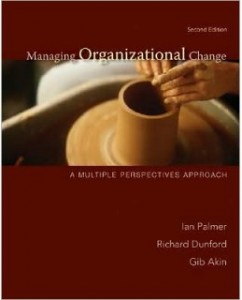
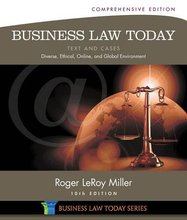
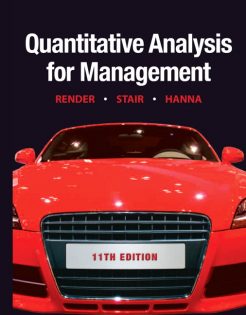
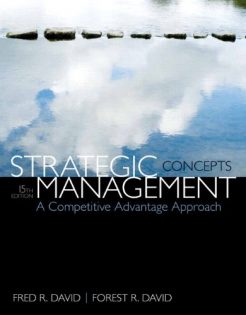

Reviews
There are no reviews yet.